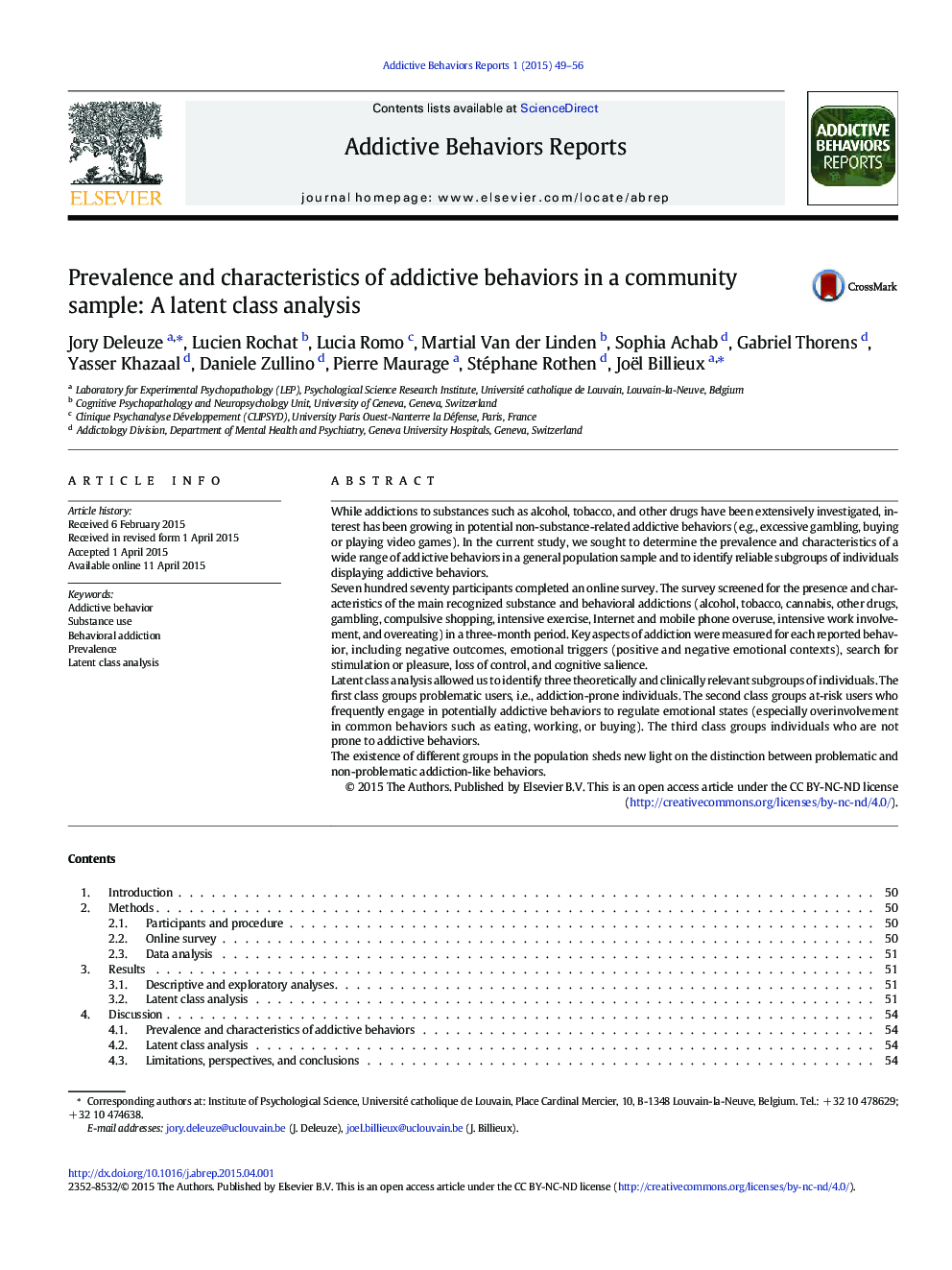| Article ID | Journal | Published Year | Pages | File Type |
|---|---|---|---|---|
| 900759 | Addictive Behaviors Reports | 2015 | 8 Pages |
•The study screened for addictive behaviors in a large community sample.•Three-month prevalence was established for substance and behavioral addictions.•Subgroups of individuals were identified based on addictive behavior prevalence.•Substance use/excessive behaviors are most often not related to addiction symptoms.•A subgroup of addiction-prone individuals was identified.
While addictions to substances such as alcohol, tobacco, and other drugs have been extensively investigated, interest has been growing in potential non-substance-related addictive behaviors (e.g., excessive gambling, buying or playing video games). In the current study, we sought to determine the prevalence and characteristics of a wide range of addictive behaviors in a general population sample and to identify reliable subgroups of individuals displaying addictive behaviors.Seven hundred seventy participants completed an online survey. The survey screened for the presence and characteristics of the main recognized substance and behavioral addictions (alcohol, tobacco, cannabis, other drugs, gambling, compulsive shopping, intensive exercise, Internet and mobile phone overuse, intensive work involvement, and overeating) in a three-month period. Key aspects of addiction were measured for each reported behavior, including negative outcomes, emotional triggers (positive and negative emotional contexts), search for stimulation or pleasure, loss of control, and cognitive salience.Latent class analysis allowed us to identify three theoretically and clinically relevant subgroups of individuals. The first class groups problematic users, i.e., addiction-prone individuals. The second class groups at-risk users who frequently engage in potentially addictive behaviors to regulate emotional states (especially overinvolvement in common behaviors such as eating, working, or buying). The third class groups individuals who are not prone to addictive behaviors.The existence of different groups in the population sheds new light on the distinction between problematic and non-problematic addiction-like behaviors.
Graphical abstractFigure optionsDownload full-size imageDownload as PowerPoint slide
